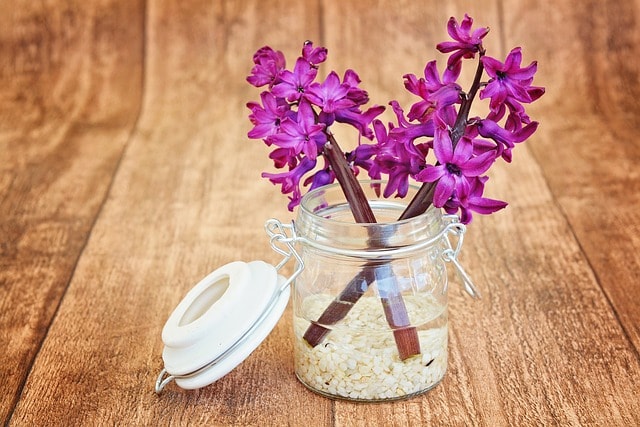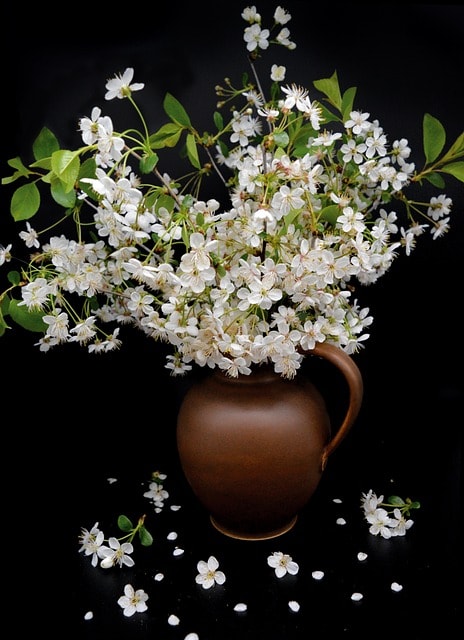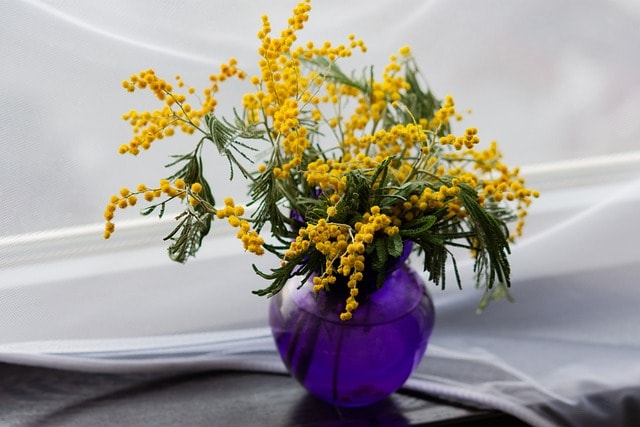For flower enthusiasts, understanding what keeps blooms fresh and lively—whether they’re in a vase, on a patio, or as a cemetery tribute—is crucial. Flowers have unmatched beauty that often feels fleeting, but with the right knowledge, you can extend their freshness and enjoy their brilliance much longer.
This blog answers one of the most common questions for flower lovers and curious minds alike: how long can flowers go without water? You'll also learn how various factors like temperature, sunlight, and proper care impact flower longevity. Let's dive in!
Understanding Flower Longevity
The lifespan of flowers without water varies widely depending on the type of flower and how it’s treated. Some flowers may fade within a matter of hours, while others stay remarkably vibrant for days. For most flowers, their survival without water is brief—but with proper techniques, their freshness can be maximized.
-
Fresh cut flowers often last a few hours to 24 hours without water if kept in the right environment.
-
Hardy flowers, like those with woody or heavier stems, will last longer compared to soft-stemmed, delicate flowers.
Did you know? Even tiny steps like trimming stems and removing excess foliage can make a substantial difference in keeping flowers fresh.
Factors Affecting Flower Longevity
1. Temperature
Temperature plays a significant role in preserving flowers. Cooler temperatures sustain freshness, whereas a hot environment accelerates wilting.
-
Ideal temperature for cut flowers is between 35°F and 37°F.
-
Avoid placing flowers near heating vents, direct sunlight, or in a hot car, as warm conditions can cause rapid dehydration.
-
Cold environments, like those achieved with cool water and refrigeration, significantly slow bacterial growth and maintain fresh flowers longer.
2. Humidity
Humidity plays a significant role in the longevity of cut flowers. Most flowers thrive in environments with moderate to high humidity levels, typically between 40-60%. This is because flowers naturally release moisture into the air through a process called transpiration. When the air is too dry, flowers lose more moisture than they can absorb, leading to dehydration and wilting.
To maintain optimal humidity levels for your cut flowers, you can:
-
Place the vase away from heating vents, radiators, and air conditioning units, which can dry out the air.
-
Use a humidifier in the room, especially during dry winter months or in air-conditioned spaces.
-
Group plants together to create a microclimate with higher humidity levels.
-
Avoid placing flowers near drafty windows or doors, which can cause moisture loss.
By maintaining a humid environment, you can help extend the life of your cut flowers and keep them fresh for longer.
2. Direct Sunlight
Keep flowers away from direct sun—it can cause petals to fade, wilt, and lose their vibrant colors prematurely. Flowers in direct sunlight are far more prone to water loss and dehydration.
-
Store your arrangement in a cool, shaded environment.
-
If you’re picking flowers in your garden, try to do so during the cooler hours of the morning to ensure they stay fresh longer.
3. Proper Care and Handling
The way you handle flower stems after cutting can determine how long they’ll last. Follow these steps for optimal freshness:
-
Use sharp garden snips to make a clean, angled cut at the bottom of the stem. This improves water absorption.
-
Remove any excess foliage below the waterline to prevent bacterial growth.
-
Place flowers in fresh, cool water immediately after cutting and replenish it every 1-2 days to maintain maximum hydration.
Flower-Specific Longevity
Not all flowers are created equal—different flowers have varying levels of resilience. Some can last for hours, while others stay fresh for days or even weeks.
-
Roses can survive 1-3 days without water, thanks to their hardy, woody stems, but they will still require care to prevent wilting.
-
Tulips and other soft-stemmed flowers tend to last only a few hours without water.
-
Sunflowers and carnations, known as hardy flowers, can survive longer under less-than-ideal conditions.
Remember, certain flowers respond differently to environmental conditions. When in doubt, aim to hydrate your flowers as soon as possible.
Traveling with Flowers
If you’re transporting flowers, especially in a car, their environment matters. Temperature inside a vehicle tends to be warmer than outside, which can accelerate dehydration. Follow these tips when traveling with flowers:
-
Wrap the stems in a damp paper towel and place in a plastic bag for temporary hydration.
-
Store flowers in a cool location inside the car, away from direct sunlight or heat.
Flowers in a Car
When transporting cut flowers in a car, it’s essential to consider the temperature and humidity levels inside the vehicle. Cars can quickly become hot and dry, which can cause flowers to wilt and dehydrate.
To keep flowers fresh in a car:
-
Keep the car at a moderate temperature, ideally between 65-75°F (18-24°C).
-
Avoid direct sunlight, which can cause flowers to heat up and dehydrate. Use window shades or tinted windows to filter the sun’s rays.
-
Use a damp paper towel or cloth to wrap around the stems, helping to maintain humidity and prevent moisture loss.
-
Keep the flowers away from heating vents and air conditioning units, which can dry out the air.
-
Consider using a thermally insulated bag or container to keep the flowers cool and protected during transport.
By taking these precautions, you can help keep your cut flowers fresh and healthy during transport in a car.

Dried Flowers Are Forever
If you love the look of flowers but don’t want the hassle of maintaining fresh blooms, dried flowers are an excellent alternative.
-
Dried flowers are already dehydrated and can last indefinitely with minimal care.
-
Keep them in a suitable environment that’s free from excessive moisture or direct sunlight to prevent discoloration.
-
While they won’t have the fragrance of fresh flowers, their aesthetic charm remains timeless.
Testing Soil Moisture
Testing soil moisture is crucial to ensure your plants receive the right amount of water. Overwatering can lead to root rot and other problems, while underwatering can cause stress and dehydration.
To test soil moisture:
-
Stick your finger into the soil up to the first knuckle. If the soil feels dry, it’s time to water.
-
Use a soil moisture meter, which can provide a more accurate reading of the soil’s moisture levels.
-
Check the soil’s color and texture. Dry soil tends to be lighter in color and more crumbly, while moist soil is darker and more compact.
-
Water your plants when the top 1-2 inches of soil feel dry to the touch. Avoid getting water on the leaves or crown of the plant to prevent fungal diseases.
By regularly testing soil moisture, you can ensure your plants receive the right amount of water and thrive in their environment.
Practical Tips for Flower Care
When it comes to cutting and displaying flowers, a few steps can extend their life significantly:
Rehydrate Immediately: After flowers are cut, place them in cooler temperatures with fresh water to allow the stems to absorb water efficiently. Cleanliness is crucial in keeping cut flowers fresh; always use clean water and a sanitized vase to minimize bacterial growth.
Trim Smart: Re-cut stems every 2-3 days to improve water uptake.
Use Floral Preservatives: A few drops of flower preservatives or sugar in the water can replenish nutrients and help prevent bacterial growth.
Avoid Room Temperature Water: Opt for cold water instead. It slows decay and keeps flowers fresh overnight.
Reduce Foliage: Removing extra leaves helps avoid excess moisture loss and bacterial contamination.

Flowers at Fort Snelling Cemetery
Whether you're leaving a tribute bouquet at a loved one’s gravesite or delivering blooms to someone special, flower care remains essential. Services like Fort Snelling Cemetery Flowers offer curated arrangements and guarantee prompt delivery, ensuring that your flowers stay alive and fresh during critical moments. Consider their service for specialized care during transport and placement.

Final Thoughts on Keeping Flowers Fresh
To truly understand how long can flowers go without water, one must consider a flower's environment, type, and proper care. While cut flowers won’t last forever, following best practices like trimming stems, hydrating with cool water, and avoiding direct sunlight will maximize their beauty.
Whether you’re arranging a bouquet for a special occasion, creating a floral tribute, or bringing fresh flowers into your home, these tips will help you keep your blooms vibrant and maintain fresh flowers for days to come.
Resources for Keeping Flowers Fresh
To further your understanding and ensure your flowers stay vibrant, here are some helpful resources:
-
How to Care for Fresh Cut Flowers - A detailed guide on extending the life of your blooms with practical tips for care and maintenance.
-
DIY Flower Preservatives - Learn how to make effective flower preservatives at home using simple household items.
-
Common Flower Types and Care Needs - A breakdown of popular floral species and how to cater to their specific preservation needs.
-
Flower Arranging 101 - A beginner's guide to arranging flowers beautifully for any occasion.
-
Seasonal Flower Guide - Discover the best flowers to use throughout the year based on seasonal availability and freshness.
These resources can equip you with additional ideas and solutions to keep your flowers looking their best. Explore them to make your floral arrangements last longer and remain stunning.

